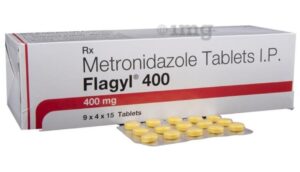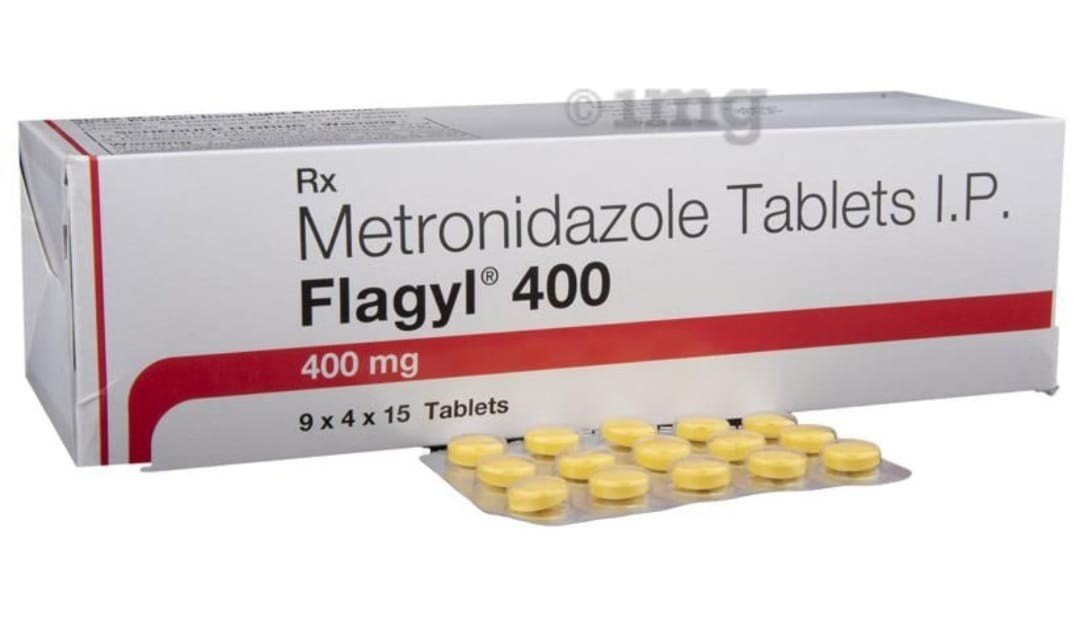
Learn how to recognize the signs that Flagyl is working. From symptom relief to reduced inflammation, understand the indicators of effective treatment with metronidazole.
Introduction
Flagyl, also known as metronidazole, is an antibiotic widely used to treat various bacterial and parasitic infections. These infections range from gastrointestinal issues to vaginal infections and dental conditions. As with any antibiotic, understanding when the medication is working is crucial to ensure that it is effectively combating the infection. This comprehensive guide explores the signs that Flagyl is working, offering a deep dive into the subtle and clear indications of its effectiveness. Whether you’re dealing with an infection or simply curious about how antibiotics like Flagyl function, this article will help you recognize the key indicators that treatment is on the right track.
What Is Flagyl, and How Does It Work?
To fully grasp the signs that Flagyl is working, it’s essential to first understand what Flagyl is and how it functions within the body. Flagyl is a type of antibiotic that belongs to the nitroimidazole class. It works by inhibiting the growth of bacteria and parasites, making it an effective treatment for infections such as bacterial vaginosis, trichomoniasis, and certain types of gastroenteritis. Flagyl targets the DNA of bacteria, disrupting their ability to reproduce and survive, which eventually leads to the elimination of the infection. However, the signs that Flagyl is working may not always be immediate, and recognizing these signs requires patience and attention to detail.
Symptom Relief: A Primary Indicator
One of the most obvious signs that Flagyl is working is the gradual relief of symptoms. When you begin taking Flagyl, the infection it is targeting will start to subside, resulting in noticeable improvements in how you feel. For example, if you were experiencing abdominal pain, diarrhea, or foul-smelling discharge due to a bacterial infection, these symptoms should begin to lessen within a few days of starting the medication. However, it’s important to note that while symptom relief is a positive sign, it does not necessarily mean that the infection is completely eradicated. Completing the full course of antibiotics is essential to prevent a recurrence.
Decrease in Inflammation and Pain
Another clear sign that Flagyl is working is a reduction in inflammation and pain. Many bacterial and parasitic infections cause inflammation in the affected areas, which can lead to discomfort or pain. As Flagyl starts to eliminate the infection, the inflammation should gradually decrease. This reduction in inflammation is often accompanied by a noticeable decrease in pain levels, particularly in conditions such as bacterial vaginosis or gastrointestinal infections. Paying attention to these changes can help you determine whether the medication is working effectively.
Normalization of Body Temperature
Fever is a common symptom of infection, and one of the most encouraging signs that Flagyl is working is the normalization of body temperature. If you were experiencing a fever due to the infection, a decrease in your temperature after starting Flagyl is a good indication that the antibiotic is helping to control the infection. However, it’s important to continue monitoring your temperature to ensure that it remains stable throughout the course of treatment.
Improved Gastrointestinal Health
For individuals taking Flagyl to treat gastrointestinal infections, such as Clostridium difficile colitis or giardiasis, one of the clearest signs that Flagyl is working is an improvement in digestive symptoms. These infections often cause symptoms like diarrhea, cramping, and nausea. As the antibiotic begins to target and eliminate the bacteria or parasites causing the infection, these symptoms should gradually improve. The frequency and severity of diarrhea should decrease, and you should begin to experience more regular bowel movements. Additionally, nausea and stomach discomfort should lessen as the infection clears.

Reduced Vaginal Discharge
Flagyl is commonly prescribed to treat bacterial vaginosis and trichomoniasis, both of which can cause abnormal vaginal discharge. If you are taking Flagyl for one of these conditions, one of the key signs that Flagyl is working is a reduction in the amount of discharge, as well as an improvement in its odor and consistency. The discharge associated with these infections is often foul-smelling and may be accompanied by itching or irritation. As the antibiotic takes effect, the discharge should become less noticeable, and the associated symptoms should improve.
No Worsening of Symptoms
While it’s natural to expect gradual improvement when taking Flagyl, one of the signs that Flagyl is working is the absence of worsening symptoms. In some cases, infections can worsen if left untreated or if the antibiotic being used is ineffective. If you notice that your symptoms are stabilizing or improving without any significant worsening, this is a good indication that Flagyl is working as intended. However, if your symptoms worsen or new symptoms develop, it’s important to consult your healthcare provider to ensure that the infection is responding to treatment.
Restoration of Energy Levels
Infections often lead to fatigue and a general feeling of malaise. As Flagyl begins to combat the infection, one of the signs that Flagyl is working is the gradual restoration of your energy levels. You may begin to feel less tired and more capable of completing daily activities. This improvement in energy is a positive sign that your body is recovering from the infection, allowing you to return to your normal routine.
Stabilization of Bowel Movements
For those taking Flagyl to treat gastrointestinal infections, stabilizing bowel movements is a significant sign that Flagyl is working. Infections that affect the digestive system often cause irregular bowel movements, including diarrhea or constipation. As Flagyl starts to eliminate the infection, you should notice that your bowel movements become more regular and less urgent. This stabilization is a strong indicator that the antibiotic is effectively targeting the cause of the infection.
Decreased Abdominal Pain
Abdominal pain is a common symptom of many gastrointestinal infections. If you are taking Flagyl for an infection that affects the stomach or intestines, one of the signs that Flagyl is working is a noticeable decrease in abdominal pain. As the infection is brought under control, the pain should gradually lessen, allowing you to feel more comfortable and resume normal activities. However, if the pain persists or worsens, it’s important to consult your healthcare provider.

Reduction in Nausea and Vomiting
Nausea and vomiting are often symptoms of bacterial and parasitic infections affecting the digestive system. As Flagyl starts to eliminate the infection, you should notice a decrease in both nausea and the urge to vomit. This improvement in gastrointestinal symptoms is a clear sign that the medication is working effectively. It’s important to stay hydrated during this period, as nausea and vomiting can lead to dehydration.
Clearer Skin
For individuals using Flagyl to treat skin infections, one of the most visible signs that Flagyl is working is an improvement in the condition of the skin. Infections like rosacea, for example, can cause redness, inflammation, and blemishes. As Flagyl begins to target the bacteria causing the infection, you should notice that your skin becomes clearer, with less redness and fewer blemishes. This improvement is a clear indication that the antibiotic is effectively treating the infection.
Reduced Swelling in Infected Areas
Bacterial infections often cause swelling in the affected areas of the body. One of the signs that Flagyl is working is a noticeable reduction in swelling, particularly in infections affecting the skin or soft tissues. As the infection is brought under control, the swelling should gradually decrease, making the affected area feel less tender and more comfortable.
Normalization of Urination
For individuals taking Flagyl to treat urinary tract infections, one of the signs that Flagyl is working is a normalization of urination. Infections in the urinary tract can cause symptoms such as frequent urination, burning during urination, and the presence of cloudy or foul-smelling urine. As Flagyl starts to eliminate the bacteria causing the infection, these symptoms should begin to improve, with urination becoming more comfortable and less frequent.
Decrease in Foul Odors
Infections often produce foul-smelling discharges or odors, particularly in cases of bacterial vaginosis or gastrointestinal infections. As Flagyl works to eliminate the bacteria causing the infection, one of the signs that Flagyl is working is a decrease in these foul odors. Whether it’s vaginal discharge, bowel movements, or breath, the reduction in unpleasant smells is a positive sign that the infection is being treated effectively.
Clearer Mucus in Respiratory Infections
For individuals using Flagyl to treat respiratory infections, one of the signs that Flagyl is working is the improvement in the quality of mucus. Infections like pneumonia or sinusitis can cause thick, discolored mucus, often accompanied by a cough or nasal congestion. As the antibiotic begins to take effect, the mucus should become clearer and easier to expel, indicating that the infection is being controlled.
Less Frequent Urgency
In some infections, particularly those affecting the bladder or digestive system, a sense of urgency is common. For example, you may feel the need to urinate frequently or experience urgent bowel movements. One of the signs that Flagyl is working is a reduction in this urgency, allowing you to feel more comfortable and less anxious about immediate bathroom trips.
Consistent Appetite Improvement
Infections can significantly affect your appetite, leading to decreased food intake and weight loss. As Flagyl begins to work, one of the signs that Flagyl is working is the gradual return of your appetite. You may find yourself feeling hungrier and more interested in eating, which is a good indication that your body is recovering from the infection.
Improved Sleep Patterns
Infections often disrupt sleep patterns due to discomfort, pain, or fever. One of the signs that Flagyl is working is an improvement in your ability to sleep through the night. As the infection is brought under control, the associated symptoms should lessen, allowing you to get more restful and uninterrupted sleep. This improvement in sleep is a clear sign that your body is healing.
No New Symptoms Arising
As you take Flagyl, one of the most reassuring signs that Flagyl is working is the absence of new symptoms. If the infection is responding well to treatment, you should not experience any additional symptoms beyond those you had when starting the medication. If new symptoms develop, it may be a sign that the infection is not responding, and you should consult your healthcare provider.

Completion of the Full Course of Treatment
Finally, one of the most critical signs that Flagyl is working is completing the full course of treatment as prescribed by your healthcare provider. Even if you start to feel better before finishing the medication, it’s essential to take all the prescribed doses to ensure that the infection is completely eradicated. Stopping the medication early can lead to the infection returning or developing resistance to the antibiotic.
Conclusion
Flagyl is a powerful antibiotic that can effectively treat a range of bacterial and parasitic infections. By understanding the signs that Flagyl is working, you can monitor your progress and ensure that the medication is doing its job. From symptom relief to the reduction of inflammation, recognizing these signs can help you feel more confident in your treatment plan. Remember to always complete the full course of Flagyl, even if you start to feel better, to prevent recurrence or antibiotic resistance.
Read also: blister on lip not cold sore Understanding the Underlying Causes





